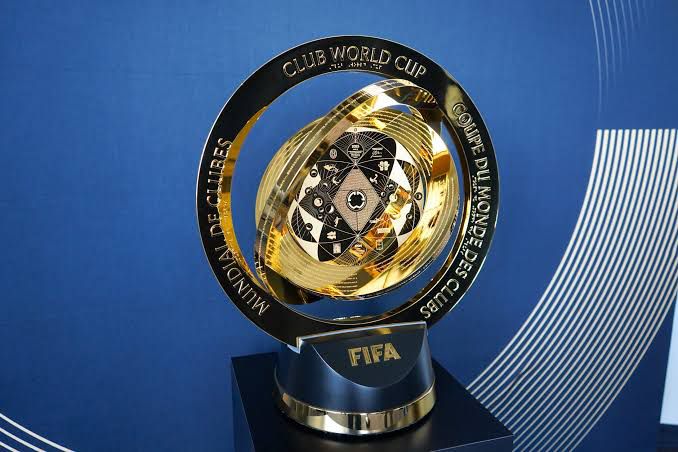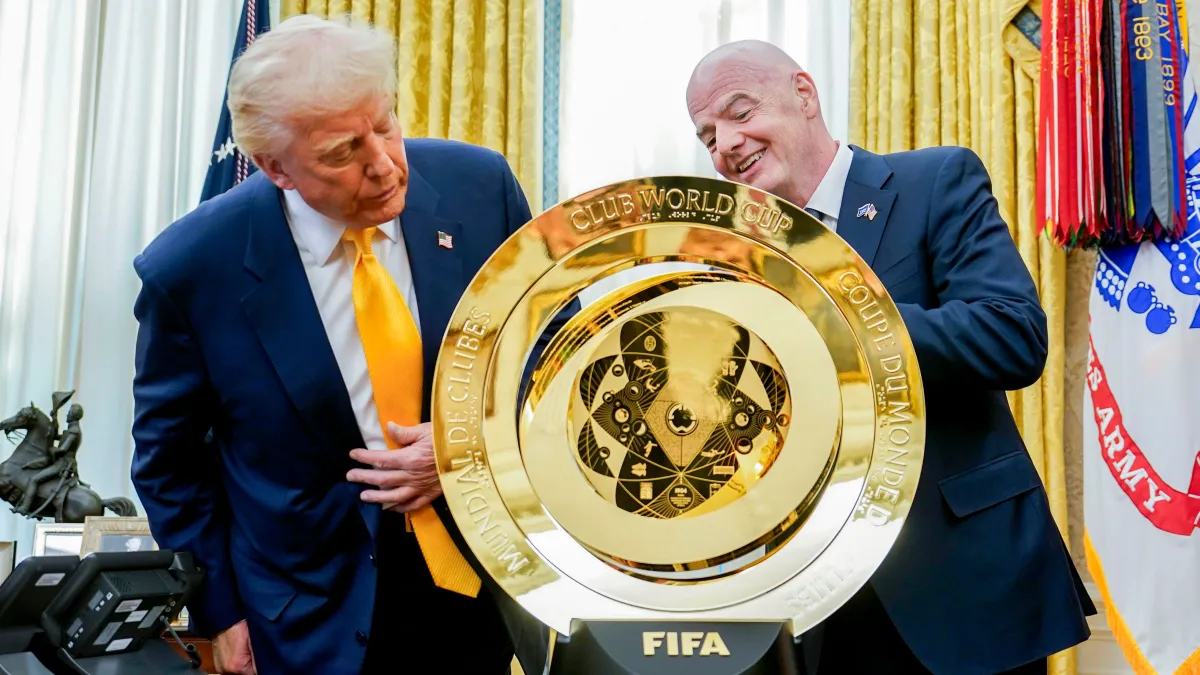The FIFA Club World Cup returns in June 2025 in a radically expanded 32-team format, promising a new global stage for clubs and players. Yet the tournament’s launch has sparked fierce debate in the general football fraternity. Critics, including players’ unions, league officials and some managers, warn that it is a corporate cash-grab shoehorned into an already cramped calendar, leaving players with “no summer break” and risking their health. Proponents, from FIFA leadership to some club officials and supporters, insist it will showcase young talent, boost clubs financially and celebrate football worldwide with a fancy new trophy. So the question remains, is this competition a positive for football or detrimental to the sport?
The Club World Cup has its roots in the long-running Intercontinental Cup, an annual clash since 1960, between Europe’s and South America’s club champions. FIFA took over the concept in 2005, merging champions from every confederation into a December finale. For nearly two decades, the tournament featured just six or seven teams, the champions of UEFA, CONMEBOL, CONCACAF, AFC, CAF, and OFC, plus a host nation club, playing a straight knockout.
Since 2016, FIFA President Gianni Infantino has championed a radical overhaul, a World-Cup-style event with 32 clubs every four years in the middle of the year. In late 2017 FIFA discussed a 24-team, four-yearly format to replace the old Confederations Cup and formally approved a 24-team plan in March 2019. China was originally set to host an expanded tournament in 2021, but that was delayed by the COVID-19 pandemic. In February 2023 FIFA finalized the slot allocation, Europe 12 teams, South America 6, and others as described below, and in June 2023 named the United States as host for the inaugural 32-team edition. The 2025 Club World Cup is slated for mid-June to mid-July in 12 U.S. cities. It is the 21st edition of the Club World Cup, but the first in this new format.
A new trophy for FIFA’s revamped Club World Cup will be awarded to the 2025 champions. FIFA has described the expanded tournament as a fresh “big competition” to benefit clubs worldwide, but the frenzy around it has ignited doubts about FIFA’s intentions.
The 2025 edition runs roughly June 14 – July 13 2025 and features 32 clubs ,eight groups of four, then a 16-team knockout. Qualification is by continental championship winners and high-ranking clubs over a four-year cycle. Notably, Major League Soccer, MLS, expanded its U.S. representation; Inter Miami CF earned a spot by topping the MLS regular season, despite exiting the playoffs. Critics saw that as evidence of FIFA’s eagerness to include Lionel Messi’s Miami club in the tournament. In total three MLS teams will compete, Inter Miami, designated as the host entrant, 2024 CONCACAF champions Los Angeles FC and Seattle Sounders.

The draw has delivered some high-stakes groups, for example Paris’ Saint-Germain face Atletico Madrid, Brazilian champions Botafogo and MLS’s Seattle. Collectively, 32 matches will be held in U.S. venues, including NFL stadiums converted to grass pitches, over four weeks. Top teams from Europe and South America could play up to seven games (three group games plus four knockout rounds), compared to only one or two in the old format. In this way, the 2025 Club World Cup resembles a mini-World Cup for clubs, though still with a third-place playoff unlike FIFA’s national-team event.
FIFA and organizers emphasize that the U.S. host cities were chosen to maximize exposure, “East Coast” scheduling aims at European broadcasters, and conflicts with the Gold Cup, CONCACAF’s national-team tournament, were minimized by moving group games to the East while the Gold Cup stays mostly west. Messi’s Inter Miami opens the competition against Egypt’s Al Ahly on June 14 in Miami, and as of early June, tickets for that match and even the final are still available for sale. FIFA notes that tickets have been sold to fans in over 130 countries, but empty seats at early games could raise concerns.
From a business standpoint the new Club World Cup is massive. Six months before kick-off, FIFA sealed a $1 billion TV-rights deal with streaming platform DAZN. Together with sponsorship and host revenues, FIFA projects around $2 billion from the event. In turn, FIFA is plowing most of it back into football. President Infantino announced that the 2025 tournament will offer a record $1 billion prize pot to the 32 clubs. The champion could earn up to $125 million, more than any club prize in history.
Additionally, FIFA says it will contribute $250 million in “solidarity” payments to benefit smaller clubs and associations around the world. Infantino trumpets this as unprecedented support, “FIFA will neither retain any funding for this tournament…all revenues will be distributed to club football”.
While FIFA emphasizes that every dollar goes to clubs, many point out who really profits. According to Reuters, the $2 billion gave FIFA confidence to announce the $1 billion prize pot, but critics note that the lion’s share of media and commercial revenue effectively enriches FIFA’s partners, the U.S. host nation, top clubs and corporate sponsors, rather than ordinary players or fans. One former players’ union leader mentioned that FIFA will finance the CWC “with their reserve revenues, but those should go to the clubs who need it”. In short, the competition is a spectacular financial venture, clubs stand to earn big sums, and FIFA’s coffers will benefit indirectly through future sponsorship and growth of the U.S. market.
The flip side is mounting alarm over the impact on players. After completing domestic leagues and continental tournaments in May, top players may go straight into another month of competition, and then possibly return to national team duty or tournaments. “It means you have no summer break,” Liverpool legend and former coach, Jürgen Klopp, now Red Bull’s global soccer head, warned in January. Pep Guardiola echoed that sentiment saying, “I am not against new competitions, I am against the lack of time to recover year by year,” he told The Associated Press.
Independent data underline these concerns. A FIFPRO report on the 2022 World Cup, held mid-season, found 43% of players suffered “extreme or increased mental fatigue”. Players routinely log 50,60 games per season, last year Manchester City played 59 matches in all competitions, the most of any team. A survey cited by FIFPRO shows 72% of players want a shorter calendar and mandatory rest, and 17% played over 55 games in 2024. Nearly one-third of players had streaks of six games in a row without a break. Adding up to seven Club World Cup games, for finalists, on top of that is widely viewed as pushing human limits for these players.
Many players and unions feel their voices were ignored. In October 2024 FIFPRO Europe’s president David Terrier flatly accused FIFA of sidelining players’ concerns. Speaking to Reuters, Terrier said “the players are ready and…what they cannot stand is that FIFA does not hear or respect them” and warned that “more and more players are telling us they want to stage a strike” over the overloaded calendar. He even likened the Club World Cup to the aborted European Super League, calling it “a devious way to build” a breakaway competition and insisting FIFA “should first and foremost take care of the nations, not the clubs”. In his view, FIFA is leveraging the World Cup’s commercial appeal while racing ahead without meaningful dialogue. European leagues’ chief Mathieu Moreuil echoed this in May, telling AP that FIFA had ignored repeated appeals for consultation and that “we’ve tried to engage…without any positive response. So enough is enough” .
FIFPRO has formally protested the schedule as unlawful, filing an antitrust complaint to EU regulators in October 2024. In December, FIFPRO issued a statement that putting the Club World Cup in June – July 2025 “without implementing further player workload safeguards demonstrates a lack of consideration for the mental and physical health of participating players, as well as a disregard for their personal and family lives”, the official statement is echoed in AP and Reuters reports. Even Manchester City star Rodri publicly warned in October that players were “close” to striking over calendar congestion.

Not everyone sees doom, however. Across much of the globe, the new Club World Cup is already stirring up excitement. FIFA itself hopes the tournament will “usher in a new era for club football worldwide,” calling it “the greatest, most inclusive and merit-based global club competition in history”. Early ticket sales and fan campaigns suggest there may be demand. Fans in Brazil, Argentina and Mexico have bought the most tickets outside the U.S.A, and at home U.S cities have celebrated already, supporters of LAFC won a playoff to reach the CWC, and thousands in Japan raised a huge banner reading “Grab the World Cup” for Urawa Red Diamonds’ send-off. In South Korea, the semi-pro K-League framed Ulsan Hyundai’s participation as a national honor, local media declared it “not just the journey of one club, but a message that the entire K-League sends to the world” .
Advocates for the competition argue that these benefits will trickle down. FIFA’s chief of global football development, Arsène Wenger, says the expanded format will “increase resources for clubs all over the world” and that there is a “demand for big competitions”. He notes the boom in sports science and nutrition that lets players compete longer, citing 35yr + players like Messi and Ronaldo still winning awards, implying top athletes can handle more games.
The European Club Association, whose members include all the giants, even called the expansion “fantastic news for club football.” Its officials argue more high-profile matches will stimulate global interest and club revenues, especially for less-rich leagues, without harming the core Champions League and domestic leagues.
On the pitch, coaches and players are preparing to give the new tournament a fair shot. Real Madrid and Manchester City, both indicate they will field strong sides. City manager Guardiola has promised to “take it seriously”. Within City’s camp, ex-midfielder Izzy Christiansen told the club’s media that the Club World Cup is a “great opportunity to use younger players, get them ingrained and get them minutes on the pitch”. She emphasized that for fringe stars and academy prospects it is “a moment of high motivation…to put on the shirt in a big stadium at first-team level”. Indeed, clubs like City are already planning to rotate in youngsters, anticipating that next season they may rely more on fresh legs.
Paris Saint-Germain’s coach Luis Enrique also publicly endorsed the concept, calling CWC an “incredible competition” that will, “maybe not now… but [soon] become an incredibly important competition to win”. Boca Juniors’ new boss Miguel Ángel Russo said Argentina’s fans are eagerly awaiting the event, his team sold out its three group games, and he is “going…with the highest expectations”. Former Manchester City defender Joleon Lescott added that City have huge support in the U.S. and the event offers the “opportunity…to get some new fans and for existing ones that don’t get to see the club in competitive matches”.
The expanded Club World Cup is simultaneously a broadcast spectacle and a stress test for football’s governance. Its success or failure may hinge on how well FIFA balances commercial gain with sporting integrity. So far FIFA has promised that all revenues will be invested back into the game, and top officials insist that the new format “has demand” and will “increase resources” for clubs around the world. Yet leading voices warn the calendar is already overpacked.
If the Club World Cup is truly about celebrating talent, it must avoid burning out the players. FIFPRO’s surveys and legal actions underscore a deep concern, players feel the system prioritizes events over their well-being. For now, it carries a new trophy and high stakes, but also a credibility problem that FIFA, clubs and players will have to resolve together.




